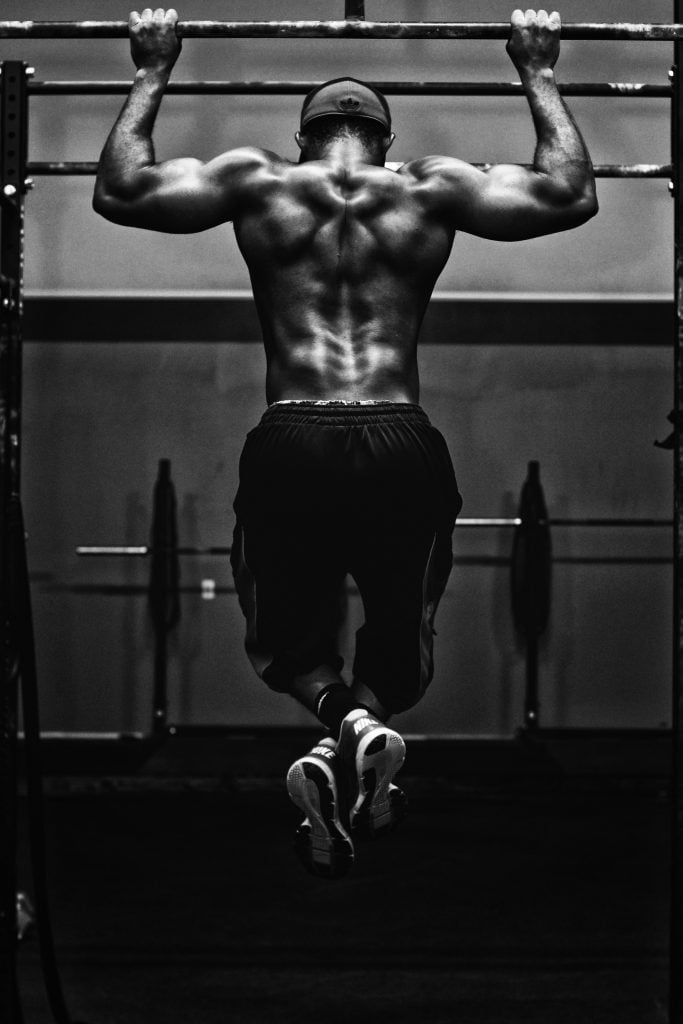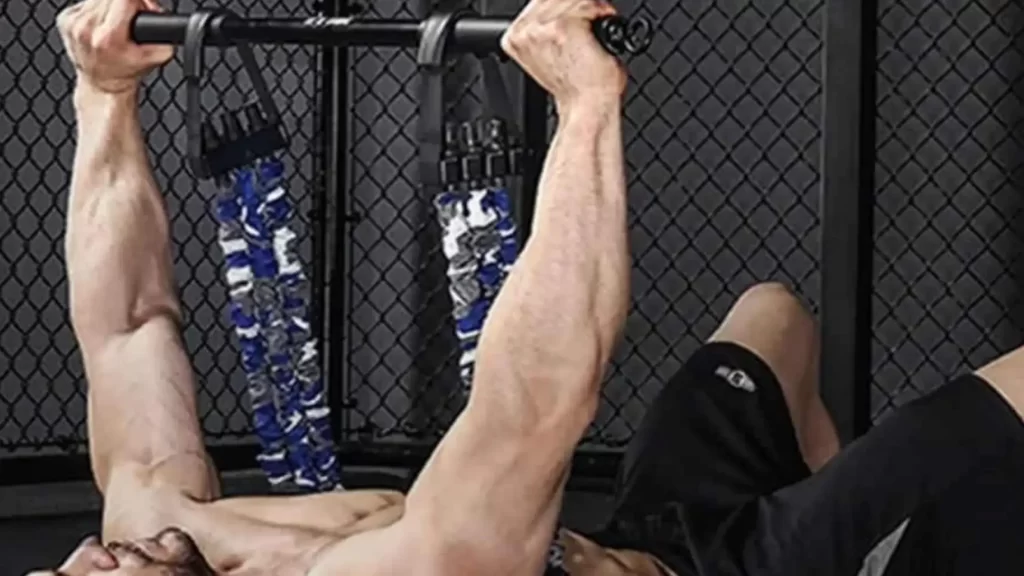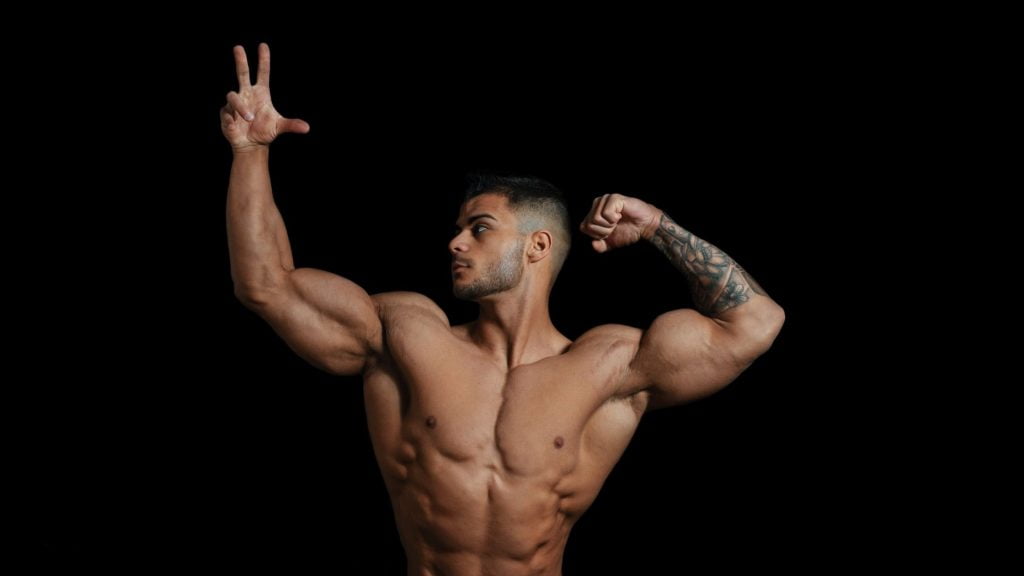The straight arm pulldown, also known as the straight-arm lat pulldown, is an isolated exercise that focuses on the muscles of the upper back, shoulders, and arms. The Exercise strengthens the posterior deltoids, triceps, rhomboids, and teres major muscles in your upper arms, in addition to the latissimus dorsi muscles on the sides of your back. In front of a cable pulley machine, lower the cable attachment with a small bend in your arms to complete the straight-arm pulldown. Several types of equipment, such as a pair of dumbbells or a resistance band, are used in different versions of this exercise.
IN THIS ARTICLE
What muscles do work while pulldown?
Primary Muscle Groups:
As you might expect, the straight arm cable pulldown targets your lats. The latissimus dorsi, which originates in the lower-mid back, is the largest muscle in the back.
Most “pulling” exercises, such as the lat pulldown, pull-ups, and other rowing workouts, rely heavily on the lats.
Secondary Muscle Groups:
The straight arm pulldown targets the triceps, chest, abdomen, shoulders, and upper back. While your back will put in the most effort to lower the weight, other muscle groups will help to stabilize the action.
How To Do The Straight Arm Pulldown?
Begin with 2–3 sets of 10–15 repetitions for the straight arm cable pulldown. Sets and repetitions should be chosen based on your ability to keep good form throughout all sets and repetitions.
- Attach a wide-grip bar or a lat bar to one of the cable machine’s higher positions.
- Using an overhand grip, grab the handle. The width of your grasp should be somewhat wider than the width of your shoulder.
- Take a few steps away from the cable machine to relieve the weight on the cable stack. The position of your head and neck should be neutral, and your posture should be tall. Shoulders and hips should be spaced apart somewhat.
- Your arms should belong in front of your body, with your elbows not overextended. Maintain a tucked chin throughout the action, as if you were holding an egg beneath your chin. To create a secure foot position, grip the floor with your feet and distribute your weight equally on your feet. While engaging your core, pre-tension your shoulders and hips. Rotate your shoulders outward to engage your lats. This is where all repeats should begin.
- Begin the downward action by squeezing your lats and pushing the bar toward your hips while maintaining long arms. Allow the movement of your shoulder blades to be natural.
- In the bottom position, squeeze your lats.
- Begin your upward journey. Allow your arms to return to their starting position while maintaining your alignment progressively. The weight must not come into contact with the weight stack.
- Before starting the following repetition, pause for a second.
Muscles Worked in the Straight-Arm Pulldown
- Lats
- Upper back
- Read deltoid
- Triceps
- Chest
- Core

ALSO READ: Glute Ham Raise : 3 Variants For Strong Legs
Straight Arm Pulldown Benefits
- The connection between the mind and the muscles have enhanced. Lifters who can’t feel their lats moving during regular pulldown sessions will benefit from straight-arm pulldowns. If you keep your arms straight, the mid-back and biceps will not take over the movement, allowing you to concentrate more directly on the lat muscles you want to work.
- The deadlift’s stability has improved. By drawing the bar close to your body (and “bending” it around your shins at the bottom and hips at the top), the straight-arm pulldown strengthens the lats in the same way that deadlifting does. The ability to keep the bar in contact with your body during a deadlift results in a stronger, more stable lift and lowers the chance of injury.
- Warm up your lats and promote muscular activation with the straight-arm pulldown before deadlifts or other back workouts. The straight-arm pulldown is especially excellent at starting a workout to enhance back and shoulder mobility since it gives an intensive lat stretch at the top (starting) position.
- Towards the end of a workout, execute many sets of 10–15 reps with short rest periods (30–45 seconds). This will pump a large amount of blood into the area, which is a method for muscle growth in and of itself.
- If you have a lower-back injury, substitute rows or straight arm cable pulldown. Unwanted motion or stress in the lower back is reduced because the action is limited to shoulder flexion and extension.
How To Stretch Before The Straight Arm Pulldown?
While the straight arm pulldown can stretch your lats and improve mobility on its own, it is recommended that you warm up your upper body first.
Regression
Lower the load or attempt them with a band instead of a cable if other back muscles besides your lats are taking over the straight-arm pulldown. You can also do the exercise while standing up straighter, which will put less strain on your lats and make the movement simpler to manage.
Progression
Use a longer rope or two rope handles at the same time to widen your range of motion and make the straight arm rope pulldown more challenging.
Difference between Lat Pulldown & the Straight Arm Pulldown
Although both the straight-arm and lat pulldowns train your back muscles, they are distinct in key respects.
Posture: The most obvious distinction between the straight-arm pulldown and lat pulldown is the stance required for each. The lat pulldown is a seated workout, whereas the straight-arm pulldown is a standing exercise.
Grip: Straight arm pulldown necessitates a tighter grip due to the pulley attachment. Similar to a regular pull-up, lat pulldowns are performed with a shoulder-width grip.
Movement pattern: Your elbows bend as you lower the pulldown bar during a lat pulldown. In a straight-arm pulldown, on the other hand, your arms maintain straight during the whole movement pattern, providing for a broader range of motion.
Muscles worked: Although they target many of the same muscles—particularly the lats—these two upper-body exercises target secondary muscles slightly differently. Straight-arm pulldowns engage your core, while lat pulldowns activate your trapezius and biceps.
Weight level: The lat pulldown helps you lift more weights than the straight arm pulldown because it uses your biceps and traps.

Straight Arm Lat Pulldown Mistakes
1. Bending Your Arms
During the straight arm lat pulldown, many lifters bend their arms. Bending the arms allows the triceps to take control of the exercise, relieving back stress. Lifting less weight with flawless technique is preferable to lifting too much and making mistakes.
Make sure your arms are locked out straight throughout the straight arm lat pulldown for lat.
2. Using Your Arms Too Much
Pulling the weight down with your arms is another common mistake made during the straight arm lat pulldown. In this workout, your arms should play a supporting role. To get the most out of the straight arm lat pulldown, concentrate on using your lats to bring the weight down.
3. Completing Partial Reps
Far too often, weightlifters pull the attachment halfway down and then return to the starting position. Partially completing reps with heavier weight puts you at risk of injury and limits your gains. Instead, for a full lats contraction, bring the attachment all the way down to your thighs.
ALSO READ: Effective Way To Hang Clean -Benefits & 3 Variants
Safety and Precautions
Consult your doctor or physical therapist if you have a wrist, elbow, shoulder, or back ailment to see if this exercise is safe for you. During this activity, you should not experience any discomfort. If you do, the workout is over.
Is straight arm pulldown good?
Straight-arm pulldowns are beneficial for lifters who can’t feel their lats moving during traditional pulldown sessions. If you keep your arms straight, the mid-back and biceps won’t take over the movement, allowing you to focus more directly on the lat muscles you’re seeking to strengthen.
What Alternatives Are There To The Straight Arm Pulldown?
1. Wide Grip Lat Pulldown
The wide grip lat pulldown is a forearm and biceps resistance-reducing version of the lat pulldown. Starting with your palms facing away from you and your hands wider than shoulder-width apart, hold the bar in your hands.
Bring the bar all the way down to the top of your chest. You may need to lessen the weight in this shape because your arms take a back seat and are one of the best alternatives for straight arm rod pulldown.
2. Underhand Barbell Row
Grab the barbell with an underhand grip while bending over at a 45-degree angle. With each rep, squeeze your lats to row the barbell towards your abdominal button. Repeat!
3. Alternating Lat Pulldown (with Handles)
Another excellent unilateral lat exercise is the alternating lat pulldown. One handle can be drawn down at a time using two independent handles. The alternating lat pulldown is a great way to balance out muscular imbalances on both sides of your back.
Conclusion
In this article, we cover everything related to the straight arm pulldown exercise. Without a question, one of the most efficient workouts for isolating the lats is the straight arm pulldown. It has a wide range of advantages, from increasing lat strength to improving the deadlift technique. This exercise should be considered while planning a workout or training program, regardless of your health and fitness goals.













